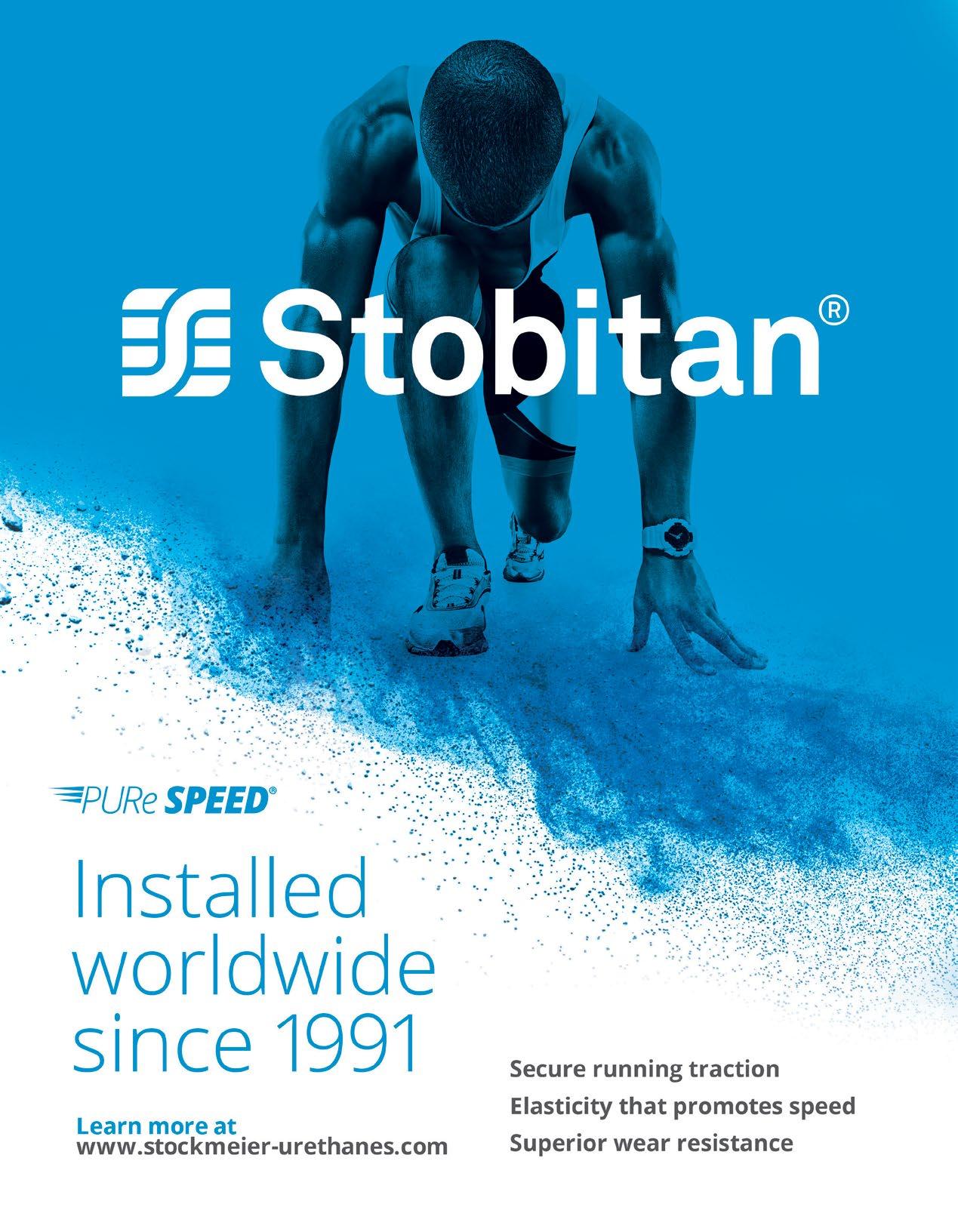Cricket, Once America’s National Sport, Now Wants Olympic Inclusion
World Athletics Wants Cross Country Back in the Olympics
ASBA’s Multi-Generational Member Companies

Cricket, Once America’s National Sport, Now Wants Olympic Inclusion
World Athletics Wants Cross Country Back in the Olympics
ASBA’s Multi-Generational Member Companies


The American Sports Builders Association, a non-profit trade association comprised of builders, designers and suppliers for sports facilities, exists to promote the highest standards of design, construction and maintenance.
ASBA Chairman
David Clapp, CTB, CTCB
ASBA Executive Director
Fred Stringfellow, CAE
Editor
Mary Helen Sprecher
2331 Rock Spring Road Forest Hill, MD 21050
Tel: 443-640-1042
Fax: 443-640-1031
Email: info@sportsbuilders.org
Build It Right is a publication of the American Sports Builders Association © 2023. All Rights Reserved. For more information or to order additional copies, contact the ASBA headquarters office. Unless otherwise noted, all images are copyright ASBA and their respective owners. Unless otherwise noted, all articles are copyright ASBA. Direct requests for reprint to the ASBA headquarters office. The American Sports Builders Association prints Build It Right to provide its members and other interested parties in the sports design, construction and supply profession with a forum for the discussion of topics of interest to the entire industry. The ideas and opinions expressed in Build It Right are solely those of the contributors and do not necessarily represent the view, positions or policies of ASBA, its members, its board of directors, officers or staff. ASBA is not responsible for any claims made in any advertisements, and does not endorse any manufacturer, supplier or vendor. ASBA does not warrant the performance of any member or member employee or subcontractor. Some
ASBA’s Announces Two New Publications
ASBA’s Awards Program Now Accepting Entries Exclusive Survey: Coaches and ADs Weigh in on Athletic Facilities
Post-Tensioned Concrete Workshop Recap Winter Meeting Recap
FEATURES
Cricket, Once America’s National Sport, Now Vying for Olympic Inclusion

World Athletics Wants Cross Country Back in the Olympics
ASBA’s Multi-Generational Member Companies: Keeping
Our industry is one that is obsessed with the weather. We discuss it daily. Our livelihoods depend upon it. So much of our industry can suffer loss with bad weather. Acrylic coatings can wash out. Polyurethanes can foam and fail. Subgrades for paving and concrete and turf work can turn soft and unworkable in the presence of rain. Even oppressive heat and dryness can pose their own share of difficulties to all of the trades mentioned above.
As I write this column, I am watching a typical cold spring rain descend upon Tennessee. There will be no work today. Yet these same rains produce what we love about spring. Bulbs long dead in the ground break the surface of the earth and produce a glorious color display. Trees long since brown produce young green leafy growth. Our yards spring up, demanding weekly mowing to keep groomed. The dormancy and apparent death of winter is suddenly overcome with life and the promise of growth and gain.
ASBA took a break from the winter in early March to hold our annual winter meeting, this year in Cancun, Mexico. It was a wonderful respite from the northern winter. Temps were in the 80s; there was nary a drop of rain. 110 people gathered


there for association work. Much progress was made on the content of the technical meeting which will be held in Houston this year in early December. I am always impressed by those who volunteer to do the hard work of this association. Thank you to each attendee in Cancun for what you contributed to that meeting and to those who will be speaking and working at the Houston meeting later this year.
As always, I am humbled to be your chairman. ★
Sincerely,
David Clapp David Clapp, CTB, CTCBChairman
David Clapp, CTB, CTCB
Baseline Sports Construction
Secretary/Treasurer
Megan Buczynski, PE, LEED AP Activitas, Inc.
Chairman - Elect
Randy Resley
Sport Court of the Rockies, LLC
Secretary/Treasurer - Elect
Allen Verdin, CFB
The Motz Group
Courts Division President
Todd Dettor
Fast-Dry Courts, Inc. & 10-S
Tennis Supply
Track Division President
Jordan Fisher, CTB Fisher Tracks, Inc.
Fields Division President
Kirk Grego, CFB
Mid-America Golf & Landscape, Inc.
Professional Division President
Craig Honkomp, PE, PS, LEED AP
Sportworks Design
Supplier Division President
David Burke
NGI Sports
Ryan Auer
Leslie Coatings, Inc.
Tim Gerrits, ASLA GMB Architecture + Engineering
Anthony Graham MAPEI Corp.
Sean Hufnagel, PLA, ASLA HNP, LLC
Fred Kolkmann, CTCB
Fred Kolkmann Tennis & Sport Surfaces, LLC
John Nelson, CFB Peacock Services, LLC
David Painter STOCKMEIER Urethanes USA, Inc.
Jameson Sheley, CFB-S, CTB Byrne & Jones Sports Corporation
Jonathan Wright, CTCB Court One
Executive Director
Fred Stringfellow, CAE fred@stringfellowgroup.net
Associate Director
Nikki Augsburger nikki@sportsbuilders.org
Director of Meetings/Member Services
Cynthia Sanchez cynthia@sportsbuilders.org
Director of Education
Kaylee Derby kaylee@sportsbuilders.org
Program Manager
Kristin Evans, QAS kristin@sportsbuilders.org
Association Coordinator
Jordan Langeheine, QAS jordan@sportsbuilders.org
Financial Manager
Amy Chetelat, CAE amy@stringfellowgroup.net
Technical Writer
Mary Helen Sprecher maryhelen@sportsbuilders.org
Legal Counsel
David H. Pettit, Esq.
Flora Pettit PC


The ZONE™ LED sports light features a sleek low profile design and high performance LEDs paired with precise silicone optics to produce superior levels of illumination, uniformity and cutoff. Available in two sizes and multiple lumen outputs for any court sport application. Optional wireless control systems available. Proudly made in America.
The ZONE™ LED sports light features a sleek low profile design and high performance LEDs paired with precise silicone optics to produce superior levels of illumination, uniformity and cutoff. Available in two sizes and multiple lumen outputs for any court sport application. Optional wireless control systems available. Proudly made in America.
Get ready to enrich your library with two publications from ASBA. One is a brand-new manual and the other is a returning favorite but both belong on your bookshelf.
Courts & Recreational Surfaces: Construction and Maintenance Manual: This publication, the latest in ASBA’s popular Construction and Maintenance Manual series, differs from other ASBA books. Rather than focusing on one sport, or on one type of facility, the new publication includes information on an array of facilities for sports never before covered by ASBA, including:
• Volleyball (Beach, Indoor, Snow, Sitting and Grass Courts)
• Basketball (Indoor, Outdoor and 3x3)
• Beach Tennis
• Padel
• Team Handball (Indoor and Beach)
• Playgrounds and Floor Games
• Para Sports (Goalball, Indoor Wheelchair Rugby, Sitting Volleyball, Soccer for the Blind, etc.)
• Dodge Ball (Indoor and Playground Version)
• Cricket
• Lacrosse (Box and Beach)
• Hockey (Indoor/Floor and Beach)
• Rugby (Beach Touch and Flag)
• Cheer, STUNT, Acro & Tumbling
• Disc Golf and Footgolf
• Wrestling, Boxing, Martial Arts
• ...and many others.
The book covers the construction and maintenance of facilities on specific types of surfaces, including indoor (wood and acrylic flooring), beach/sand (facilities built in landlocked areas as well as in waterfront areas), outdoor hardscapes (asphalt and concrete surfaces), grass/synthetic turf (facilities for sports not presently included in the ASBA’s Sports Fields Manual), other sports surfacing systems (including modular and roll-out surfaces) and mixed surfaces (including facilities for horseshoes, snow volleyball and bocce).
The new manual illustrates ASBA’s response to an increasing demand for a wider variety of sports venues, whether those are located in parks, in tournament-specific facilities, on the campuses of colleges and high schools, in clubs or even in backyards. The book also has upwards of 50 new diagrams as well as chapters on accessories, amenities and equipment for various sports, as well as on lighting (indoor and outdoor.)
Information on ordering the book can be found on ASBA’s website, www.sportsbuilders.org. Under the Resources tab at the top of the home page, click on Publications. The cost is $59.95, and the book can be purchased in either hard copy or pdf format.
Running Tracks: A Construction and Maintenance Manual: A perennial favorite, this publication marks the 11th edition of a leading resource used by facility owners, administrators, coaches, athletic directors, builders, architects, engineers and others in the industry.
This book promotes quality design, construction, maintenance and repair of track facilities, and can be instrumental in providing guidance to those who want to install a track. The publication walks the reader through the options for design, bidding, surfacing and construction currently available in the marketplace.
The new edition of the book incorporates information set forth by various track and field governing bodies, and contains the most up-to-date diagrams and illustrations, including those necessitated by recent rule changes.
Additional improvements to the book include a streamlined layout with detailed section synopses allowing readers to more easily find and reference specific guidance or information. In addition, the book contains updated references and links to ASBA’s position papers. More images and diagrams have been included throughout the book, and the chapter on surface installation has been updated to better reflect the methods track installers are using.
Information on ordering the book can be found on ASBA’s website, www.sportsbuilders.org. Under the Resources tab at the top of the home page, click on Publications. The cost is $44.95, and the book can be purchased in either hard copy or pdf format. ★
Note: Don’t miss ASBA’s other great publications, all of which are also available on the website…

• Tennis Courts: Construction and Maintenance Manual



• Pickleball Courts: Construction & Maintenance Manual
• Sports Fields: A Construction and Maintenance Manual
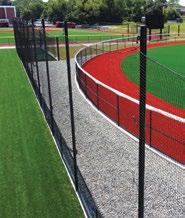
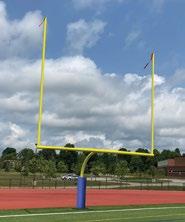


And the winner could be…your project, should you choose to enter it. ASBA is now accepting applications for its Facility Awards program.
The purpose of the program is to promote excellence in sports facility construction by recognizing those facilities built or designed by ASBA members which have met the strict qualifications. Awards are given to the facilities with recognition for participating ASBA member companies at the 2023 Technical Meeting.
Start preparing your award submission today! ASBA strongly encourages member companies to carefully review all the information on the Facility Awards including official rules, categories, application and judging process, and costs/deadlines prior to submitting an application. All facilities that meet the standards of excellence determined by the Awards Committee will receive a Distinguished Facility Award.
To qualify for entry, you must be an ASBA member in good standing and projects submitted must have been completed within the current year or within the previous 2 calendar years (ending Dec. 31 prior to the application deadline).
Don’t delay! Application deadline is June 19, 2023, at 11:59pm ET.
ASBA members may submit projects in any of the following categories:
• Tennis: Indoor Tennis Facility, Outdoor Tennis Facility, Residential Tennis Facility
• Pickleball: Indoor Pickleball Facility, Outdoor Pickleball Facility, Residential Pickleball Facility
• Track/Track & Field: Indoor Track Facility, Outdoor Track Facility, Track & Field Facility*
• Field: Single Field Facility, Multi Field Facility, Track & Field Facility*
• Courts & Recreational Facilities: Courts & Recreational Multi-Purpose Field House Facility, Courts & Recreational Multi-Purpose Gymnasium Facility, Courts & Recreational Multi-Purpose Fitness & Wellness
*Note: Track & Field Facility Award is a combination of both the track and field in the same construction project. To be eligible in this category, the entry MUST have included construction of both facilities.
Why submit a project? ASBA’s Facility Awards help further the Association’s mission to do the following:
• Challenge those responsible for sports facility construction to achieve a higher level of excellence
• Bring national recognition to sports facilities designed and built with a high degree of excellence
• Provide notoriety to ASBA member companies in recognition of their commitment to excellence in design and construction
What’s new this year: Certified Builders who complete a successful awards application (meaning whose facility wins an award) can earn one recertification point per award, up to three recertification points in one year and up to six recertification points over three years.
Award winners in all facility categories are notified of their status in late summer. Announcement of the Facility of the Year winners are made during the ASBA Technical Meeting, December 1-4, 2023, in Houston, Texas. ★
One of ASBA’s recent projects was a survey of school coaches and athletic directors. The survey, sent to subscribers of Coach & Athletic Director, was designed to gain insight into the current state of athletic facilities nationwide, as well as the plans for future improvements.
ASBA asked a range of questions on topics such as facility types, budgeting, top priorities and challenges for upgrades, as well as respondents’ experiences working with facility designers and installers. The survey results were e-mailed to all ASBA members; however, some of the key findings are as follows:
• A huge percentage of respondents (over 70%) stated they worked in a public high school setting. A little over 15% worked in private high schools and less than 10% worked in public universities and colleges.
• Budgeting was a top concern for respondents, with 82% indicating that funding was a significant challenge when it came to facility improvements.
• Top priorities for upgrades in the next 1-2 years were equipment, indoor facilities, fields (natural and synthetic), and outdoor running tracks.
• More than 80% of respondents indicated that ADA compliance is important to their facilities.
• For most respondents, the timeline for making decisions on upgrading facilities was more than six months.
• More than half of all respondents said they were familiar with ASBA’s membership directory and with its Certified Builder program, and another 42% said they were aware of the Construction and Maintenance Manual series.
The survey included a number of other insights, some facility-specific and some industry-specific. Overall, it makes for excellent and informative reading, and can be helpful in developing strategies to meet the needs of this market. The survey results were sent out to all members on March 28. If you can’t recall getting a copy of the e-mail, check with ASBA’s office to see if you can receive the information again. ★

ASBA continues to offer ways for industry members to enrich their knowledge. In early February, the Association worked with the Post-Tensioning Institute (PTI) to co-host the inaugural Post-Tensioned Concrete Workshop. The two-day event, held at the Doubletree Dallas Market Center, attracted 90 attendees.


The workshop was presented by Tim Christle, P.E. Director of PTI’s Technical, Education and Promotion Programs. It covered the installation and inspection of single strand unbonded post-tensioning (PT) systems for residential and light commercial slabs-onground. Topics included in the workshop were an introduction to PT fundamentals and systems, properties of prestressing steel, construction documents, installation practices, stressing operations and tendon finishing.
PT concrete has become increasingly popular in sports installations, thanks to its strength and resistance to cracking, making it an especially desirable option among owners seeking a durable and stable base that stands up to athletic use and provides years of useful life.
In addition to providing essential knowledge, the workshop offered eight recertification points for ASBA Certified Builders and 12 points for licensed professional engineers.
Additionally, the workshop had benefits to attendees who already qualified with the PTI as Level 1 and 2 Slab-on-Ground Installer & Inspectors. Those with Level 1 Certification were encouraged to attend the workshop for review of all materials, and for the opportunity to re-test for a higher score. Those scoring 80% or higher could submit a field work affidavit showing experience necessary for Level 2 certification.
A high percentage of attendees passed the exams and attained their Level 1 and 2 certification. ASBA received feedback that participants would have liked the workshop to be more sports-surface specific; as a result, the Association is working with the Post-Tensioning Institute to try to develop a more sports-surface specific workshop that might be scheduled in Houston prior to the Technical Meeting in December. More details will be released as they become available. ★
BOEN BOFLEX loading capacity:
LIGHT LOAD
e.g. youth athletes (90 lb)

MEDIUM LOAD
e.g. adult athletes (165 lb)
Boen Boflex provides dynamic shock absorption regardless of player size and weight. Our proprietary force reduction system combines 2 different thicknesses of cushion making it suitable from youth through adult. The system is so robust, it will even handle heavier loads such as special events and bleachers. Visit sport.boen.com for more information.
HEAVY LOAD special events, bleachers , transport carts...
The floor can withstand several tons of pressure without any damage being done. Even heavy vehicles can drive in and out without any detriment to the
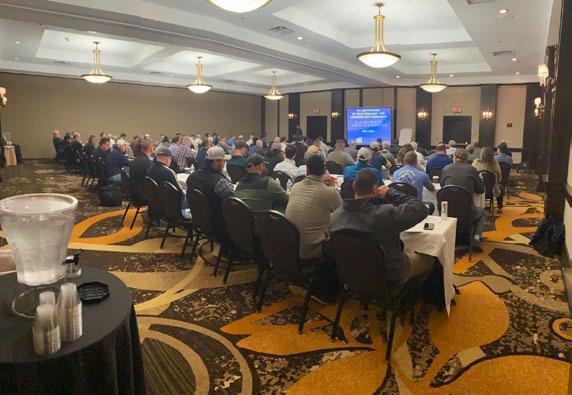


ASBA went “South of the Border” for this year’s Winter Meeting, journeying to the Marriott Cancun Resort in Cancun, Mexico. The March meeting provided, as always, excellent opportunities to help ASBA plan for the year ahead, as the reports of each membership division will attest. (See those for more in-depth information on all Association business.)
In addition, there was plenty of time for networking in a relaxed atmosphere, whether during meals, at coffee breaks or on the beaches and golf course. Winter Meetings, unlike Technical Meetings, do not offer trade shows and do not draw the same number of attendees, leading to excellent opportunities for getting to know other members (and even competitors) in a one-on-one setting.
Missed this one? ASBA will host its 2024 Winter Meeting on February 23-26, 2024, at the Hyatt Regency Grand Reserve in Puerto Rico.


Need to update your address? Have you changed your e-mail or website? Is there a new employee you’d like to list? Please help ASBA keep its records updated by letting us know!
This is the information that we will be using for ASBA’s Membership Directory – please make sure we have the most updated and accurate information.
To update any information, please contact Kristin Evans at kristin@sportsbuilders.org






T20 World Cup. And with that event, the USA will, at long last, bring cricket back to this country.
Of course, cricket also has the previously mentioned ambitious goal: to put the sport back into the Olympics.
If cricket wants to get into the Summer Games in Los Angeles in 2028, it has some tough competition: baseball and softball (working as one lobby.)
So… wait. Weren’t baseball and softball included in Tokyo? Yes, they were. But not as a permanent medal sport.
Baseball may be the great American pastime, but here’s a fun fact you might not know: Cricket was once the national sport of the United States. And it might be included in a future Olympics. Baseball and softball … well, nothing is guaranteed.
First of all, cricket is jockeying for position as a showcase sport in Los Angeles in 2028. And there’s precedent for that. According to Smithsonian Magazine, the sport currently played by millions of people in 92 countries was not only at one time the national game of the USA, but it was one of the first outdoor sports to be played on these shores.
“An 1844 cricket match between teams from the United States and Canada was the first international sporting event in the modern world, predating the revival of the Olympic Games by more than 50 years,” notes Smithsonian helpfully.
So maybe it shouldn’t come as a great surprise that the sport, propelled by demographic shifts, is increasingly turning up in the U.S. parks and recreation system – and
that officials are hoping to jump on that as a springboard to the Olympics.
The parks system is the place where the sport is picking up players here, although cricket-specific facilities have been built. Cricket is governed by the International Cricket Council (ICC). There are multiple formats for cricket; however, these do not affect the size of the field, known as the pitch.
According to the ICC’s Playing Conditions for the ICC World Test Championship 2021-2023, the pitch is a rectangular area 20.12m long x 3.05m wide. It is bounded at either end by the bowling creases and on either side by imaginary lines, on each side of the imaginary line joining the centers of the two middle stumps, each parallel to it and 1.52m from it. Full information on both the men’s and the women’s game, as well as on youth cricket, can be obtained through ICC.
And cricket is likely to gain an even bigger audience since the USA, in conjunction with Cricket West Indies, will host the 2024
The IOC’s Agenda 2020 allows each host city to recommend (note: recommend, not select) some sports for inclusion in those Games – but not necessarily in others. These are known as “showcase sports,” meaning they may be allowed in that one Olympic cycle. In Paris in 2024, for example, the showcase sports will be competitive climbing, surfing (which will probably be contested in Tahiti since the Seine isn’t exactly known for its waves), skateboarding and breaking (known in U.S. pop culture as breakdancing) – and by the way, breaking is far more popular worldwide than it is in the U.S., where it’s viewed as a byproduct of the 80s.
The IOC (perpetually in search of youthbased sports that will counteract its aging viewership) has already noted that climbing, surfing and skateboarding will appear in the LA 2028 Games (they get to make those decisions.) But the IOC has since shortlisted a few sports for Los Angeles decisionmakers to consider: motor sports, cricket, karate, baseball and softball, breaking, kickboxing, squash, American football (the flag football format, contested by both genders in the World Games in Birmingham, Alabama in 2022) and lacrosse (also offered for both genders in the World Games.)
A few quick notes: breaking is considered an odds-on favorite as a lock for inclusion. As to the others, it’s anyone’s guess. You can expect some sports that did not get shortlisted to continue to lobby; those include cheer, which has a North American pedigree and could be considered a dark horse, as well as Ultimate (formerly known as Ultimate Frisbee before Wham-O, the owner of the Frisbee name, got possessive about its use), mixed martial arts and a few others.
The IOC has confirmed that 28 sports will be present in Los Angeles 2028. At press time, the IOC had given the federations of boxing, weightlifting and modern pentathlon to make their own lobbies if they could manage to settle their various disputes. Whether they will – well, it’s anyone’s guess.
The IOC is supposed to release its final decisions on showcase sports for LA 2028 in October 2023 at the 140th IOC Session. The host city of the 2030 Winter Olympics is expected to be announced at that session as well. ★

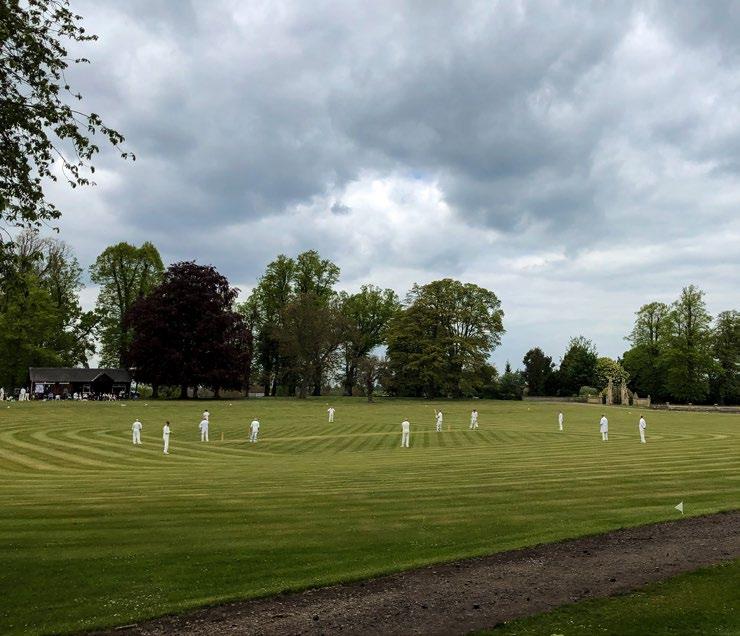
Will cross country running return to the Olympics? Maybe not immediately but that’s okay – its international governing body is in it for (excuse the pun) the long run.
Back in the summer of 2020, while everyone was in quarantine, World Athletics hit the news with its strategic plan, and one part of that was putting cross country back on the medal stand. The plan is available at this link, www.worldathletics.org/aboutiaaf/documents/strategic-plans-and-reports
Cross country is contested at the high school and college level in the U.S., potentially giving the country a deep bench of potential Olympians – and medalists. The Strategic Plan notes that World Athletics will seek to “extend the reach of the Olympic Games by working with IOC and other stakeholders to include cross country within the athletics program.”
Cross country was hosted at the Summer Olympics between 1912 and 1924. (At the
time, it was a men’s-only sport; women couldn’t compete in track and field until 1928, and the women’s marathon was not contested in the Olympics until 1984.) Fun fact: Women were allowed to compete in 1928 with the stipulation that their shorts be no more than four inches above their knees.
While cross country is traditionally a cold-weather sport, it was contested during the Summer Games, along with track & field and road racing events; unfortunately, during the 1924 Olympics in Paris, most of the men running quit the race because of extreme heat. The discipline was then dropped.
World Athletics officials originally said they would like to bring back cross country but would like to see it held during the Winter Olympics. However, that is not likely to happen because according to clause six of the Olympic Charter, “Only those sports held on snow and ice may be included in the Winter Games.”
World Athletics has stated they will push for a mixed cross country relay to be included in the Paris 2024 Games, which would put it back in the summer. The following cycle of the Summer Games would be in 2028 in Los Angeles.
Los Angeles might well be the place for cross country’s return; being outside the Rings since 1924 certainly hasn’t hurt the sport’s appeal here. At the high school level, it has consistently ranked in the top 10 most popular boys’ and girls’ sports, according to the National Federation of State High School Associations.
At the college level, cross country is second only to basketball in number of school teams nationwide. That could be because it’s also economical. In 2017, Business Insider noted, “Cross country, thanks to being a sport that doesn’t require a stadium or arena, has small teams, uses minimal equipment, and can be played by both men and women, is a close second with 2,065 NCAA teams.” ★

It’s not unusual for children to follow their parents into a profession they have heard about all their lives. It’s when that profession is a family-owned business that the story takes on another dimension, however.
ASBA’s membership includes a number of family companies. We decided to provide a snapshot view of some of those families, some of those companies and some of those stories. (And by the way, this is only a handful of those companies; we know there are a lot more.)
Pete Smith of The CourtSMITHS in Toledo, Ohio is able to claim a notable distinction: He is a member of a family company that has produced not one but two ASBA chairman (himself included.) But the story goes back even further than that.
“My grandfather had a big paving company, and he gave each of his seven kids part of the company,” explains Smith. “He gave my mom and my aunt, Peggy Wheeler, the asphalt sealing portion.”
Smith-Wheeler migrated into the tennis court construction business, joining what was then the U.S. Tennis Court & Track Builders Association (USTC&TBA.)

“My uncle stayed in asphalt and my dad stayed in tennis. We still work in the same office today, through,” notes Pete.
Pete’s father, Kevin Smith, known to many in the industry as “Uncle Kevin,” became a prominent fixture in the Association, ultimately becoming Chairman in the late 1980s. Several decades later, Pete would take up the gavel himself.
On the supplier side, Nova Sports, USA (Milford, Massachusetts) is another longtime member company with plenty of history, according to Rob Righter. Rob’s parents, Ruth and Ben Righter, along with Rob’s brother, Jeff, started the company in 1984. And just as with the Smith family, the Righters found their way into the sports business early on.

“Our family has been in the paint and coatings industry my whole life. My grandfather had a paint and hardware store in Dorchester, Massachusetts from the 1950s to the 1970s. My father and his brother worked for paint manufacturers out of college and my brothers and I worked for a paint manufacturer in the summers in high school and college.”
It was Ben Righter who started a recreational coatings division for his paint company in the 1970s and began attending meetings of the USTC&TBA.

“Ruth, Ben and Jeff started Nova Sports USA with his knowledge from the industry manufacturing premium acrylic coatings using only environmentally friendly materials – they were way ahead of the times,” Rob notes. “As the company continued to grow, my twin brother, Bill, and I came on to help as the second generation, and now with our sons,
Continues on page 20...
we’re into the third generation.”
Currently, Rob serves as president of the company, Bill as treasurer, and sons Jake (director of sales and marketing) and Joe (logistics) complete the circle.

Another longtime member company (who moved into this industry from another) is American Athletic Track and Turf in Vincentown, New Jersey.
“We had experience in roadway construction and asphalt paving,” says Lee Narozanick. “Having paved tennis and basketball courts, running tracks and roadways growing up, William Narozanick, president, who had just left his tenure at Burlington Asphalt Corp. thought staying with his strengths would be a good business model. It turned out to be a very good decision.”
Rick Burke of Chattanooga, Tennessee-based NGI Sports worked on the supplier side for a number of years before starting his own company, where other family members, including two sons, David and Mike, now also work.
“Working with your family is good,” says Burke. “It takes the pressure off you. You have people you can depend on, people you trust.”
In many cases, he adds, having a younger generation involved can drive innovation. His company has diversified over time, moving from synthetic turf to overlay systems for tennis and pickleball courts, and is exploring the padel market as well. Sometimes, he says, letting go of the reins and allowing a younger generation to take the lead can pay dividends.
“You might think that nobody can do it the same as way you and of course, that is true. But once you start giving responsibility away, you discover that although someone may do something differently, it can still lead to something really good.”
Corey Hardick of CH Court Tech, Inc. in San Diego would second that. Hardick grew up watching his father, an electrician, at work, and that work often included installing lights at tennis courts. On the weekend, Hardick and his brother would assist.
“I was hanging lights when I was 10 or 11 years old,” he laughs.
An interest in the construction of courts brought him into the industry, where he invited his brother to join the company he had founded. Three decades later, his son has joined the family business as well.
“There are so many good things about a family business,” he says, “but I would say the best part is you’re so in tune with one another. You know your family has your back. You don’t have to explain things as much.”
Hardick brings his son to ASBA meetings “because I want him to as much knowledge as I am accessible to.”
“My dad was a firm believer in membership in trade organizations,” says Narozanick, who is an active member of ASBA. “He used to say, that you only get out of an organization what do you put into the organization.”
Robert Cohen of Bernalillo, New Mexico started his own company, Robert Cohen Co., LLC, on the heels of being a partner in a
tile contracting firm. His purpose in starting the new company, he said, was “bidding and performing three projects as a sports builder. The intent was to complete those three projects and then get out of construction for good, but I got sucked in once again.”
The company retains its status as a sole proprietorship but these days, Bob’s son, Maxwell, is working as vice president and director of special projects, and attends the Technical Meeting with his father.
Advantages and Disadvantages
The sports facility construction and supply industry is unique, and working with family can add a layer of complexity, as well as plenty of rewards.
“You don’t have to work in a corporate setting,” says Pete Smith. “You have independence. And when it’s a family company, the relationships are special: my partner is always my brother and we’ll always be brothers. Mike and I know each other better than anyone but that can be good or bad.”
“With family involved, the interpersonal dynamics can spill into the workplace and workplace disagreements can spill into family time,” adds Bob Cohen.
Sam Fisher of Fisher Tracks, Inc. in Boone, Iowa, says family members tend to be a little harder on one another than they might be with an outside employee.

“It’s one of the drawbacks of managing family,” he says. “On the other hand, it’s your craft, it’s your family’s craft and you all care about it.”
Being invested emotionally in a company is something familiar to Todd Dettor of Fast-Dry Courts, Inc. & 10-S Tennis Supply in Pompano Beach, Florida, and it is just one thing he considers an advantage.



“There’s trust in leadership, building a legacy for future generations and some autonomy and flexibility in work schedules. It is also nice to understand the history of the industry so as not to make the same mistakes twice. It is also worthwhile noting that many of our team members are like family as they have been with us for so many years and quite frankly, have seen us all grow up. These team members are just like brothers to me.”
Company succession planning also can be complicated, should multiple family members work together.
“There is one rule that is a must for success,” says Rob Righter. We are not allowed to discuss work if we get together on weekends or family occasions.”
Continues on page 22...


ASBA’s Management is Family-Owned Too Here’s something you might not know: ASBA is managed by a family-owned business: Stringfellow Management Group, Inc. Fred Stringfellow founded the company with a partner in 2000 and created Stringfellow Management Group, Inc. in its current form in 2012. His son, Andrew, joined SMG in 2021 after working in finance for a few years after college.
“ASBA is partly responsible for Andrew joining SMG,” says Fred. “Andrew was attending an ASBA Winter Meeting in the Dominican Republic a few years ago as my guest, a few years after graduating from college. Several ASBA members asked Andrew during that trip if he had plans to work for SMG someday.”
Fred overheard some of these conversations during the meeting and had a heart-to-heart talk with Andrew later about whether he had an interest in joining the company. Andrew was ready and joined the company the following year when an opportunity presented itself with a new client.
And just as with ASBA’s member companies, Fred says there are inherent advantages, often personal, to working with family. “There’s something very gratifying about feeling like you’re building something that will be carried forward by another generation.”★
ASBA’s membership divisions met during the Winter Meeting in Cancun, Mexico. The following is a synopsis those meetings:
Members of ASBA’s Courts Division met with Division President Todd Dettor during the 2023 Winter Meeting in Cancun, Mexico in early March.
Courts division sessions for the 2023 Technical Meeting in Houston were considered and developed, with session champions and speakers identified. Topics ranging from post-tensioned concrete, to overlays, to maintaining clay courts will be offered at this year’s program. A complete schedule of topics will be shared later this summer.
The division reviewed the more than 20 position papers currently housed on ASBA’s website for relevance and has made a number of edits. The Technical Committee will be reviewing those with the intent of posting “2023 revised position papers” this spring.
Call for Comments
Both the Tennis Courts: Construction and Maintenance manual and the Pickleball Courts: Construction & Maintenance manual are under review in 2023. Please send any feedback or suggestions you have on either manual to Editor Pete Francesconi at peter@racquetsportsindustry.com at your earliest convenience so that the editorial boards can consider your suggestions as they review each chapter.
Following a review of the 2022 Technical Meeting sessions, Track Division participants brainstormed session ideas for the 2023 Technical Meeting. Topics attendees can expect to see in 2023 include striping, track safety zones, tips and tricks on real world repairs, the aging behavior of track surfaces, and an overview of both the CTB Exam and the new 2023 edition of the Running Tracks: Construction & Maintenance Manual.
Participants celebrated the launch of the new Running Tracks: Construction & Maintenance Manual and the contributions of all those who worked on the new book. Next steps include a careful review of all other Track Division resources, including position papers, exam questions and diagrams for any updates needed as a result of changes in the new manual.
The group spent time reviewing existing position papers and discussed topics for new ones. Suggested new position papers could focus on snow removal from tracks as well as conversion from non-raised curbs to raised curbs and reusing asphalt surfaces. The existing Water on Tracks position paper will be amended to cover birdbaths as well. All papers are to be reviewed at the Track Division meeting during the 2023 Technical Meeting. Track Division members are encouraged to share suggestions for new position papers with Track Division President, Jordan Fisher, CTB, at jfisher@fishertracks.com ★
The Fields Division, led by President Kirk Grego, met on various topics including preparation for the Technical Meeting in December. Division representatives identified session topics, creating eight sessions. Session champions and potential speakers were identified. Work now begins on session development by the suggested speakers.
The Fields Division Position Paper on Surface Tension is now out of consideration. Allen Verdin and Kirk Grego will finalize the position papers on string lining of field and proof roll methods and send to Mary Helen Sprecher for editing and publication.
Continues on page 24...
The Fields Manual is now entering into its review and update process cycle. John Nelson and Mary Helen Sprecher explained the review and editing process and asked volunteers to help with the rewrite. Any members who are interested in helping are encouraged to contact Mary Helen at maryhelen@sportsbuilders.org
Kaylee Derby, ASBA Staff, announced that the new Fundamentals of Sports Field Construction is now available online. This entry-level course provides basic information for new builder employees, design professionals new to the sports construction industry or anyone who wants to build their knowledge. A Certificate of Completion is provided at the end of the course after successful completion of a 25-question assessment.
Kaylee also provided updates on the development of the ASBA Academy as next level learning for ASBA members and provided a basic outline of the course. ★
ASBA continues its work to position itself as an industry resource in sports construction issues. The following are some of the recent and upcoming events at which ASBA has had/will have a presence:
ASBA’s Track and Fields Divisions, led by Jordan Fisher, Kristoff Eldridge, Ryan Auer, Kirk Grego, Mark Heinlein, Jim Catella, Megan Buczynski and Executive Director Fred Stringfellow will meet with representatives of NCAA, NFHS, NIAAA and USAT&F in Indianapolis on May 11th in Indianapolis, IN. This annual “track” and “fields” event is intended to strengthen communications between ASBA’s builder and designer members, and the organizations who set the rules for these sports; and to review any rules changes being considered by those organizations.
The ASBA Board of Directors, awards judges and the ASBA staff will meet in Boston, MA on August 1st and 2nd for the annual summer Board meeting and awards judging.
Courts Division President Todd Dettor and Executive Director Fred Stringfellow will attend the US Open in New York, NY and meet with USTA representatives.
ASBA staff and members will be representing ASBA at the FSB Show in Cologne Germany, October 24-27. If you’re planning to be at FSB, stop by ASBA’s booth to say hello. Feel free to use ASBA’s booth as a connection point with other ASBA members while you’re at the show. Booth info is to be distributed prior to the event.
ASBA’s members, leadership and staff will gather at the Marriott Marquis Houston in Houston, TX for ASBA’s Technical Meeting and Tradeshow on December 1-4. ★
ASBA periodically recounts rule changes that may affect the way facilities are constructed, marked or appointed (including equipment that is either experimental, recommended or mandatory.)
Rule changes affecting athletes (uniforms, sportsmanship, NIL issues, etc.) or the game itself (what constitutes a foul, etc.) are not covered here.
Information presented here is only reviewed briefly; full information can be gained through the governing bodies mentioned.
Wrestling continues to grow, and with the NCAA announcing that women’s wrestling had taken a step closer to championship status (see elsewhere in this publication), it can be expected that expanded, and improved, space for the sport will be needed. NFHS notes the following (this information is condensed from that found on the Federation’s website.)
Many schools’ wrestling rooms are simply “found spaces” with concrete floors and a wrestling mat thrown down. Obviously, school districts have many financial needs, and identifying a dedicated wrestling room is step one. However, as opportunities arise to make improvements to these spaces, the following should be considered for student safety and optimal conditions within a wrestling room.
Proper space planning for a new or renovation of a wrestling room should take into account ample wrestling practice space on the mats, along with appropriate entry space, or space for students to collect and drop their bags and equipment, free and clear of the wrestling mat area. This space outside the wrestling practice mats cannot be overemphasized in terms of student safety and keeping the practice mats free of equipment and dirty shoes.
The primary wrestling practice area should be column-free, and at least 38 feet wide, by a length ideally a factor of 38 feet, to facilitate optimal practice circles. If possible, adding a couple feet in either direction beyond this minimal 38-foot width will enable installation of the floor padding, and will create an enhanced safety factor at the perimeter walls.
This primary wrestling practice area space should be a simple rectangular geometry (avoid ‘L’ shapes or spaces with unusual corners) and should be free of “outside corners” or “pilasters” or “bump-outs” within the space. As much as possible, the walls should be completely flat and free of corners, obstructions, doors and with hardware, etc.
Wrestling practice area flooring should contain wrestling sports mat from wall to wall. Perimeter walls should be faced with a similar wrestling sports mat to around six feet high. Given tight school budgets, coaches at many schools roll up their practice mats and transport them from their practice rooms to a gymnasium or other large gathering space for competitions. However, in an ideal situation, the wrestling practice room floor mats should be adhered to the slab and installed within the space in a more permanent/secure manner. If possible, recessing the concrete slab at the wrestling practice areas around 1.5 to 2 inches from adjacent spaces will facilitate a seamless floor transition from the entry area and other adjacent support spaces.
Ceilings with wrestling practice rooms can be suspended acoustic products, or an exposed/painted structure. In either case, a clear ceiling height between 9 to 10 feet is ideal. Along with appropriate bright lighting, sound amplification and speaker system throughout the wrestling room is highly recommended. Finally, the HVAC system should be designed for proper air changes and ventilation.
Rule 2-1-9 was added to define the coaching zone as the area from the libero replacement zone to the area beyond the
end line and the sideline extended.
“The committee felt it was necessary to better define the space in which coaches are allowed to stand and instruct both players on the floor and on the bench while also providing some flexibility for specialized coaching by assistant coaches during dead-ball situations,” said Lindsey Atkinson, NFHS Director of Sports and liaison to the Volleyball Rules Committee.
Some changes have been made that will affect facility construction or renovation taking place after January 1, 2023. While ASBA’s Membership Divisions do not specifically address this, members who are working on indoor facilities should be aware of these changes, which are found on the NFHS website.
The Boys Lacrosse Field Diagram (use QR code to access the diagram) has been updated to correspond with other lacrosse rules codes. Specifically, the Table Area, Timer’s Area, Coaches’ Area and Team Area were updated to reflect 2023 rules changes. ★

Want your company featured in Member News? Please send information to ASBA using the form available on our website at sportsbuilders.org/builditright You’ll find it on the Build It Right Magazine page under the News tab that is located on the top right-hand corner of the home page. All member news must be submitted through this portal.
Charwick Promoted to Associate Principal at Activitas Activitas, Inc. is pleased to announce Jonathan Charwick has been promoted to Associate Principal. As an Associate Principal, Jon will continue to supervise project development on a daily basis, mentor staff and will be the primary point of contact for the projects he manages.
After graduating from the University of Massachusetts - Amherst in 2003 with a degree in Landscape Architecture, Jon began his professional career in traditional landscape design. Jon is a Registered Landscape Architect in the Commonwealth of Massachusetts, an active member of ASBA, and recently received a Level 1 Installation Certification from Post Tension Concrete Institute.
Jon’s design portfolio includes recreation master plans, community park designs and post-secondary athletic complexes throughout New England. Jon was the lead designer and project manager for Babson College’s Tennis Courts, the ASBA Outdoor Tennis Facility of the Year for 2019. ★

Southern Pines Recreational complex in Dublin, Georgia is ready for the season. ASG fully renovated 15 baseball/softball fields and infields and a soccer field with synthetic turf from Shaw Sports Turf. Additionally, a new pickleball complex was constructed to meet the growing demands of this sports-focused community.

Renovations took six months to complete and included excavation of the existing
fields, new drainage, concrete and fencing, and over 515,000 square feet of turf.
Patrick Remke, ASG president, states, “We are excited to see the community using the complex for Spring 2023 season and beyond! There have already been a few tournaments played on the fields and the athletes, coaches and fans love it.”
Information: www.asgsportsfields.com, info@asgsportsfields.com ★

making it much easier to refinance the entire project. Longevity combined with low maintenance cost and an enormous flexibility in the design of the floor area give gym operators and architects substantial arguments to decide for the ASB MultiSports floor. It not only represents great added value for athletes due to its joint-friendly properties but also allows for play of parasports. ★
FIBA Approved Bergo 3x3 outdoor flooring making a splash in communities Looking to increase global participation in basketball from the highest levels all the way down to the grassroots, FIBA has announced outdoor sports flooring company Bergo as part of its 3x3 Equipment Approval program.

ASB GlassFloor a Key Player in FUZED
A few months ago, a unique European project called FUZED celebrated its premiere in Helsingborg, Sweden. FUZED combines esports with analogue sports, creating a brand-new type of activity for young people. Players earn game time through physical training, a novel concept that can contribute to a healthier lifestyle.
ASB GlassFloor played an important role in this project, installing 3,300 sq. ft. of its ASB MultiSports floor. The glass and LED technology not only bridges the gap between analogue and virtual sports but also offers numerous advantages,
Having met all the strict requirements of FIBA’s Equipment & Venue Centre 3x3 Approval program, Bergo’s Approved Product Ultimate Plus is a new generation of sports flooring and has been used at the FIBA 3x3 Europe Cup 2022 in Graz, Austria and the FIBA 3x3 AmeriCup 2022 in Miami, Florida.

The FIBA Equipment & Venue Centre introduced Approved 3x3 Equipment program in 2021, with the aim of increasing the quantity and quality of top-level 3x3 competition equipment and raising the standard of outdoor playing facilities throughout the world.
One of Bergo’s foundational concepts is based on the acronym ‘WISH’ - Worldwide, Integration, Sustainability, Health. Growing health problems among children and
*ASBA reserves the right to edit all information submitted.
youth is a worldwide challenge in society. Bergo aims to support sports to unite and connect people regardless of background or gender. The company cares about the future of the globe’s children and knows sustainability is critical to that.

Information: www.bergoflooring.com ★
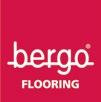
30 courts were originally built by FDC in 2019 but due to the upcoming Formula 1 race, 27 courts were resurfaced or built this year. The stadium court is built every year inside of Hard Rock Stadium in under 50 days. The award-winning tennis facility consists of a stadium court, a grandstand court, eight competition courts and 17 practice courts. As always, this year’s Miami Open welcomed some of the top tennis players in the world.
One of Facility Armor’s most utilitarian products is Track Armor. In standard widths of 6 and 12 feet, and customizable to up to 100 feet in length, Track Armor is made to withstand the rigors of cleats, high heels and more, so tracks don’t have to. The self-healing material comes with safety edging that won’t curl or ripple, creating the perfect mat and surface for your facility’s activities. It is easy to maintain and store when not in use. Central High School in Carrollton, Georgia, recently replaced their old weighted vinyl covering with a new custom Track Armor.
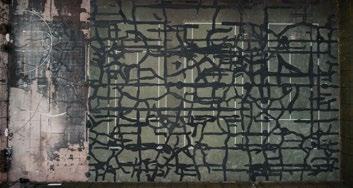
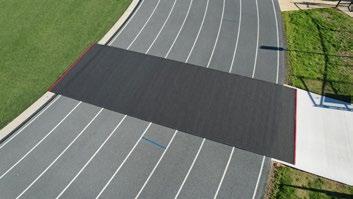
Information: facilityarmor.com/arsenal/ sports-surface-protection/track-protection ★

Fast-Dry Courts has been the Official Tennis Court Contractor of the Miami Open since 2019 and is has an ASBA Certified Tennis Court Builder on staff.

Information: www.fast-dry.com ★
HNP Landscape Architecture is proud to announce Sean Hufnagel, Chris Pugh and Michael O’Brien as full partners. Together they bring 66 years of combined experience in the industry with licensures in Alabama, Mississippi, Arkansas, South Carolina and Tennessee.

In addition to their professional experience, they hold memberships in the American Society of Landscape Architects. Sean was also recently appointed to ASBA’s Board of Directors.
at the American Sports Builders Technical Conference and Trade Show in Palm Desert, California.
PRO-Pickle systems are available for portable, semi-permanent and permanent applications. They can be used when building new courts or as an easy and cost-effective way of converting existing tennis courts, parking lots, concrete pads and multi-use spaces. The system has been in testing and refinement since May and has already been used in professional events in America.

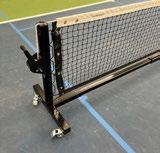
In addition to its adaptability, the system was design to shed water away from the inside of the unit, thus reducing corrosion and rust stains on courts when used outside. ★
The 2023 Miami Open became a reality with IMG and Hard Rock Stadium partnering with Fast-Dry Courts for the fifth year in a row to build, resurface and fence the tennis courts for this year’s tournament. The Miami Open took place March 19-April 2, 2023, at Hard Rock Stadium in Miami Gardens, Florida.

HNP has an established history designing fields and surfaces for NCAA Division I athletic facilities, NFHS and municipal park facilities. Its portfolio includes projects at Auburn University, Mississippi State University, Fort Payne High School, Hoover High School, Birmingham City Schools and multiple municipal sports parks across the Southeast. ★
Sport Court Midwest renovated sports facilities for the Oswegoland Park District. The courts, located at Civic Center Park in Oswego, Illinois, had featured an old, cracked, uneven and unsafe concrete surface. Now, they are stunning, safe courts that will last for decades. Three tennis courts and two basketball courts were transformed into two tennis, two basketball and two pickleball courts.
Continues on page 28...
Putterman Athletics is proud to announce the launch of two pickleball net systems. The PRO-Pickle Net System was rolled out
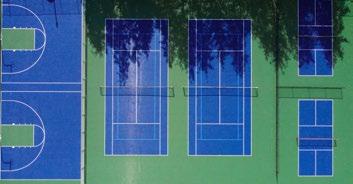
Sport Court Midwest is proud to have provided the community of Oswego with these courts to provide a place where sports lovers can gather.

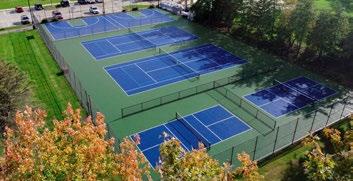
Information: www.courtofsport.com. ★
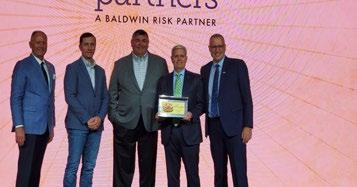
Sports Turf Company earned the 2023 Construction Risk Partners Build America Award in the Specialty Contractor category for the renovation of Sam McIntyre Stadium at Villa Rica High School. This marks the first time Sports Turf has been recognized nationally by the Associated General Contractors of America (AGC).
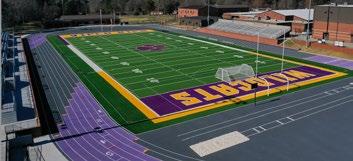
The renovation project was completed by Sports Turf and J&R Construction LLC. J&R Construction served as the construction manager and Sports Turf served as the subcontractor for the field and track renovation. The scope for both companies included a new artificial turf field, a synthetic running track, home bleachers, concessions, restroom facilities and expanded parking adjacent to the stadium.
The new artificial turf field at Sam McIntyre Stadium features AstroTurf’s RootZone 3D3 Blend system, Brock Powerbase YSR shock pad and BrockFILL. The track renovation included expanding the existing six lanes to eight lanes along with installing the synthetic surfacing. The Rekortan BS synthetic track surface is proven to endure higher wear and traffic while providing enhanced force reduction for athletes.
Information: www.sportsturf.net ★
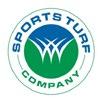
Sportsfield Specialties is celebrating its 25th year in business. Founded in 1998 with the vision of offering the sports industry with a higher level of athletic construction equipment, the company opened their first manufacturing facility in Delhi, NY in 2003. The company now owns and operates another manufacturing facility in Mocksville, NC.
Sportsfield Specialties is the innovative leader in the manufacture and sale of sports construction equipment for high school, college, and professional levels of competition and has over 30 patents awarded for their game-changing designs, as well as many industry-related awards.
Sportsfield Specialties has grown quickly over the past 25 years and now has over 200 employees located throughout both of their locations. “Sportsfield’s growth and success can be attributed to our dedicated personnel who always go above and beyond to provide the best possible products and customer service experience for our clients” says David Moxley, Director of Sales for the Sports Construction Division.
USDA Certified Biobased Product Labels
The company announced that it has earned the U.S. Department of Agriculture (USDA) Certified Biobased Product Label for Stobielast® S 1057, Stobielast® S 154 BIO and Stobiblend Z 1960.
The products can now display a unique USDA label that highlights its percentage of biobased content. Third-party verification for a product’s biobased content is administered through the USDA BioPreferred® Program, which strives to increase the development, purchase and use of biobased products.
“We applaud STOCKMEIER Urethanes
USA, Inc. for earning the USDA Certified Biobased Product Label,” said Vernell Thompson, USDA BioPreferred Program. “The label is intended to help spur economic development, create new jobs and provide new markets for farm commodities. But the label also makes it easier for consumers and federal buyers to locate biobased products and consider planet-friendlier options during purchase decisions. By having their products become USDA Certified Biobased, STOCKMEIER Urethanes USA, Inc. joins an expanding list of businesses combatting inaccurate marketing claims and the practice of greenwashing, while also contributing to a thriving bioeconomy that decreases our reliance on petroleum.”
Information: stockmeier-urethanes.com.
Synthetic Surfaces Inc. Celebrates 50 Years in Business
Synthetic Surfaces Inc. has celebrated 50 years of manufacturing NORDOT® Adhesives.
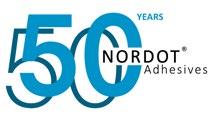
Norris Legue, “The Guru of Glue®”, and his wife Dotty started Synthetic Surfaces Inc. in 1973 manufacturing coatings and adhesives. The NORDOT® brand name came about by combining Norris and Dotty’s names. Sadly enough, Norris and Dotty are no longer present to celebrate the company’s monumental milestone.
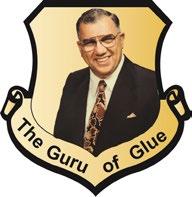
Kirk proudly carries on the Legue legacy with the same philosophy as his father: to produce top-quality NORDOT® Adhesives, while prioritizing first-rate service and customer satisfaction.
All NORDOT® Adhesives are one-part, solvent-based urethanes with high “Green Strength” (grab, tack, grip), superior water-resistance and proven long-term durability in all types of climates worldwide, with no temperature restrictions.
Information: www.nordot.com ★


ASBA continues to work on behalf of its members to help access new and better ways of doing business. Case in point: The Association’s new relationship with Yellow.
Yellow is a leading transporter of industrial, commercial and retail goods, specializing in solutions for businesses across North America through a full-service network, advanced information technologies and proactive customer service. And now, with the new agreement in place, the company will offer special rates to member companies.
Yellow offers a wide range of services, in


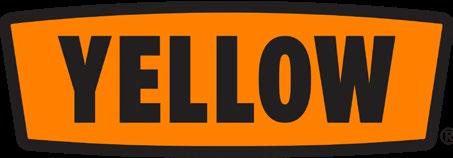
cluding transportation of materials across the U.S. and Canada, domestic ocean service, freeze protection service and even transportation of hazardous materials. Next-day delivery is available. Plus, ASBA members can use Yellow to move exhibit materials and equipment to trade shows and conventions. (In fact, Yellow has a 24/7 dedicated national tradeshow team, accelerated service and 30 days of free storage when shipping to a show).
Erica Rosignolo, Yellow’s Director of Inside Sales, Tradeshow & Associations, said that Yellow best works with companies who are aware of the market.
“Always have options,” she says, “as the shipping industry is consistently changing. To avoid unexpected costs, be aware of freight characteristics, lanes, packaging, pick up and delivering accessorials (lift gate, construction sites). Taking the time to have your freight needs, including your inbound freight, evaluated by a professional will result in more options to extend quality expectations to your customers.”
To start leveraging the advantages of ASBA’s partnership with Yellow, contact Stephanie Smith, who is ASBA’s account representative at Yellow, at 1-855-8923435 or stephanie.smith@myyellow.com. ★
On the Move: The emerging sport of Women’s Wrestling has moved closer to official championship status in the NCAA. More than the requisite 40 colleges now offer women’s wrestling at a varsity level. There is currently a National Collegiate Women’s Wrestling Championship, but it is not sanctioned by the NCAA. Attaining the number of varsity programs is an important step for the growth of women’s college wrestling; however, officials in both USA Wrestling and Wrestle Like a Girl, the sponsoring organizations, note there is still work to be completed at multiple levels (competitive, organizational, scholarship, etc.) before the sport can apply for championship status.
An uptick in women’s college programming is driving similar growth at the high school level and bringing the potential
for more designated wrestling practice and competition space, as well as more accessories and amenities.

On the Grow: The Michigan State University (MSU) Board of Trustees recently voted to build a FIFA-funded turfgrass testing facility that will make turf for more than a dozen stadiums for the 2026 World Cup. The facility will be a gift to the university after the FIFA World Cup has concluded. FIFA will fund and build the facility on MSU’s East Lansing campus which will be made available to university researchers and students.
For the Games: World Lacrosse and USA Lacrosse have been publicizing a new format for the game, Sixes, a small-sided, faster-paced and more TV-friendly version of the sport. The goal: Inclusion in the
2028 Summer Olympics in Los Angeles. (Another advantage of sixes is the lower head count per team. The Los Angeles 2028 Games will have a cap of 10,500 athletes in total, so sports with fewer athletes have an advantage.)
But although lacrosse is on the IOC’s shortlist, it isn’t alone there. Eight other sports are on the list, including baseball/ softball (counted as one lobby), cricket, breaking (known in the USA as breakdancing), flag football, karate, kick boxing, motor sport and squash. Note: All these sports are hoping to be what is known as showcase sports, meaning that although the host city may recommend them, they are not in the Games on a permanent basis. Case in point: Baseball and softball were in Tokyo but won’t be in Paris.
A final decision on the showcase sports is expected to be made at the IOC’s October 15-17 executive session in Mumbai.
Women in Construction: The Bureau of Labor Statistics (BLS) has a sobering report: Although there are nearly 400,000 open construction jobs nationwide, only about 11 percent of construction workers are women.
The Home Depot Foundation has announced an investment of $200,000 in trade school scholarships for women. The Path to Pro Scholarship for Women will provide $4,000 in financial assistance to women entering or currently enrolled in construction trades programs. ★
Builder
• GPM Civil Contracting, Inc.
• Jonesplan LLC
• MCH Sports Surfaces, Inc.
• The Striping Experts
Professional
• Lloyd Sports + Engineering
• Vision Sports Design
NEW PROFESSIONAL CERTIFICATE HOLDER
Provisional
• Custom Pickleball Courts
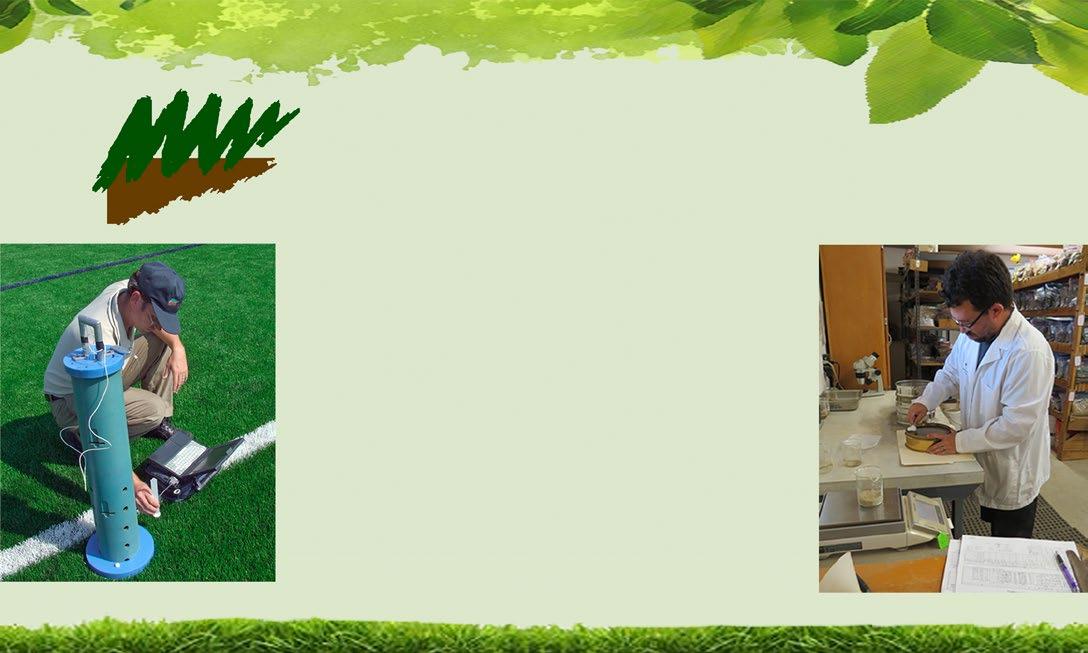
Supplier
• Kataskeves Dapedon LTD - KDF
• Sean Hufnagel, PLA, ASLA / HNP, LLC
• Robert Boyer, CFB / Argus
Construction Corp.

• Jeff Musser, CTB / Fisher
Tracks, Inc.
• Dalton Pafford, CFB-S / Byrne & Jones Construction
• Don Pierson, CTCB / Courts
Unlimited, LLC
• Greg Radcliff, CTCB / Hellas
Construction, Inc.
• Larry Reinmuth, CTB / Carter
Construction Company
• Matt Schnitzler, CTB / Hellas
Construction
